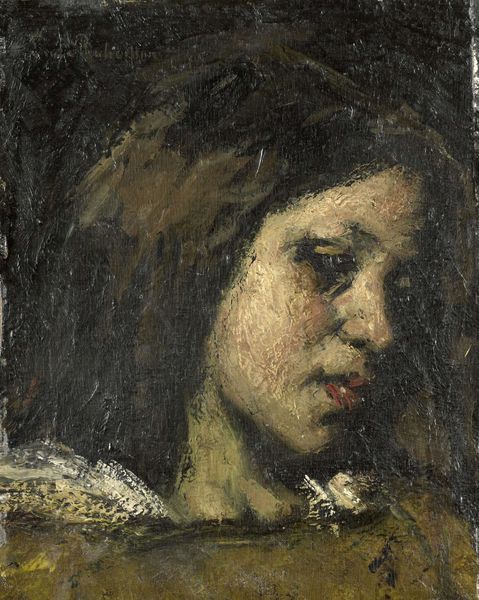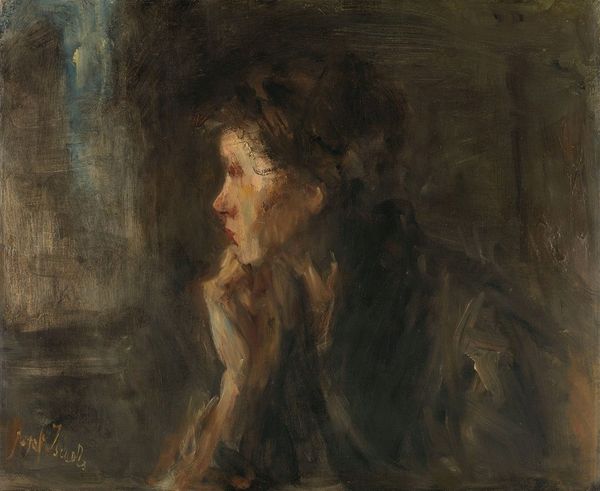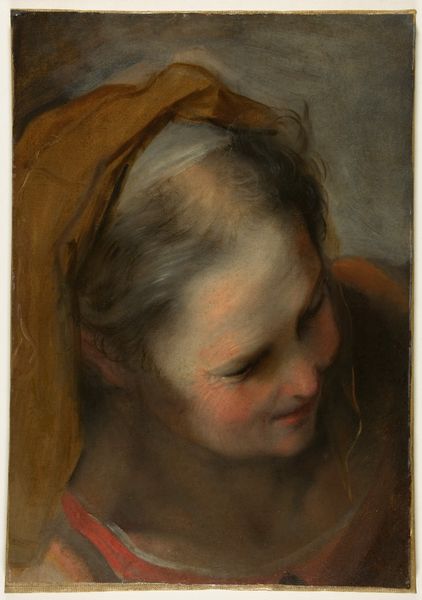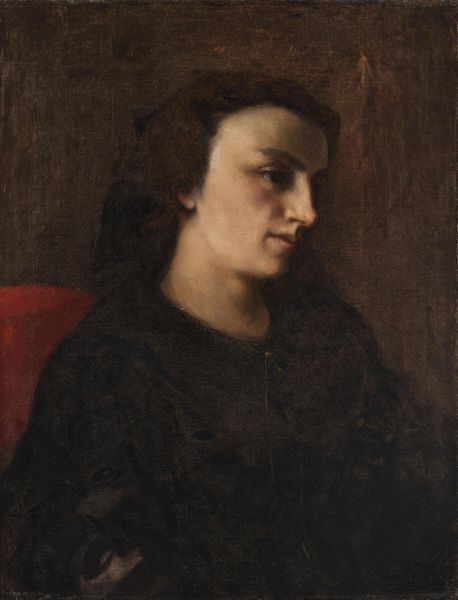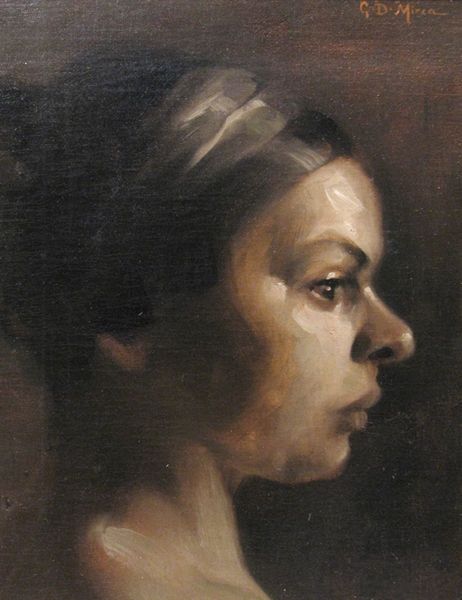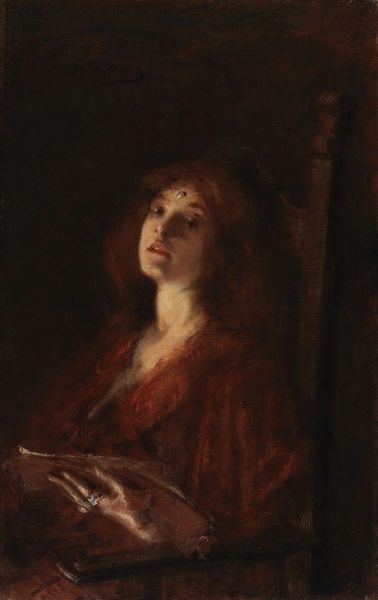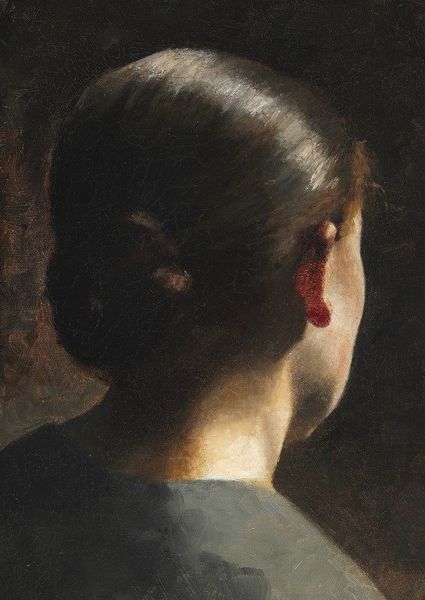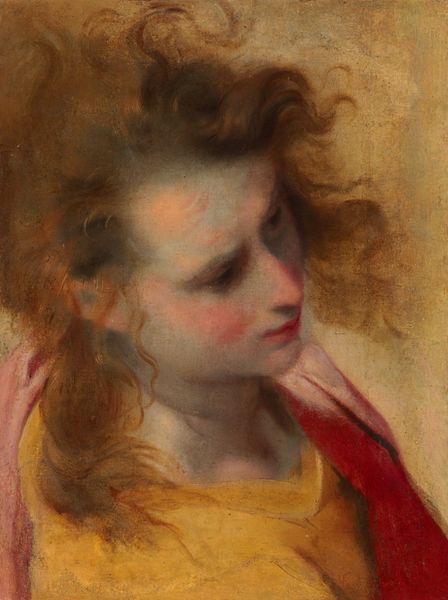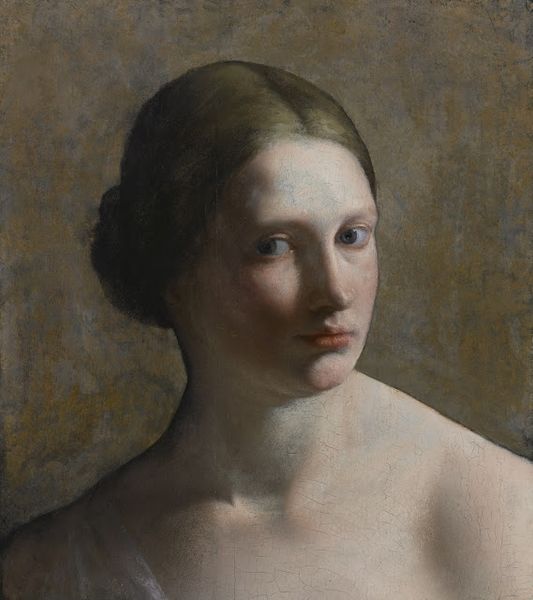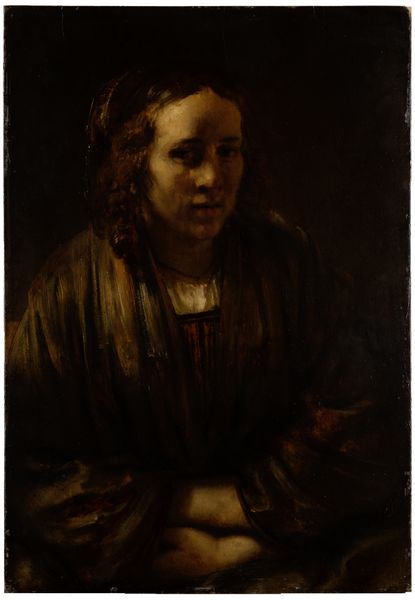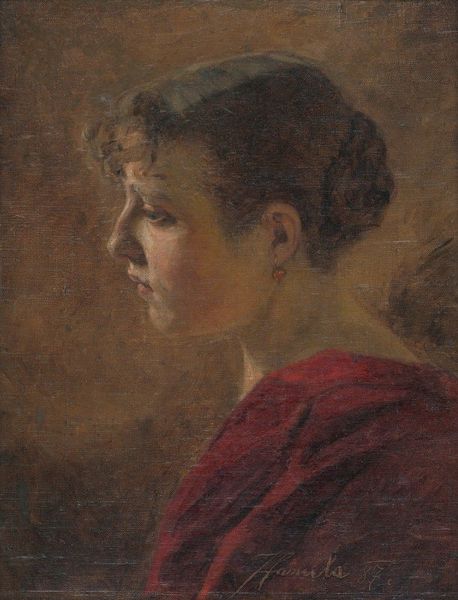
Copyright: Public domain US
Curator: Here we have Periklis Vyzantios’s “Orel,” an oil painting rendered in 1914. Editor: A solemn profile. I’m immediately struck by its quiet intensity, almost like a paused breath held in the dark. The limited palette lends a somber, reflective air, wouldn’t you agree? Curator: Absolutely. Vyzantios, though trained in realism, definitely seems to be flirting with impressionism here, right? Check out the loose brushwork, especially in the hair, so soft and touchable! Yet the underlying structure is so deliberately traditional. I get a sense he's still finding his voice, isn’t it wonderful? Editor: I see her positioned within this fascinating moment of shifting artistic conventions and increasingly urgent sociopolitical realities. A portrait of a white woman from the bourgeoise captured amidst the transition from tradition toward modernity; what world is she seeing in 1914 as Europe heads inexorably toward war? Curator: Ah, now I can’t unsee her quiet defiance, as well as vulnerability! The tilt of her chin seems assertive, yet the delicate modeling around her eye betrays a hint of doubt, doesn't it? Like she knows something terrible is on the horizon. What an expressive way to suggest conflict! Editor: Consider her class and gender constraints too. Here's a woman, presented through a male gaze no doubt, facing the precipice of upheaval, potentially caught between upholding a fading patriarchal structure or carving a new path in the face of war. Who might Orel really be if these contextual elements were revealed more? Curator: A very good point, given the constraints she’s bound by. Now I see Orel and also my grandmother at a similar age. Her expression makes me consider her hopes, and secrets, hidden beneath the surface of a historical moment. I like that sense of the intimate in contrast with public events. Editor: Exactly, art at its best holds the mirror up to larger debates but also captures the deeply personal struggles of those caught in these moments. It speaks to us now of legacies we are still untangling, still grappling with. Curator: What a remarkable snapshot of a woman and her time. Editor: Precisely. The beauty of “Orel” lies not just in its composition but its invitation to consider the unspoken, and still very much unfolding, chapters.
Comments
No comments
Be the first to comment and join the conversation on the ultimate creative platform.
